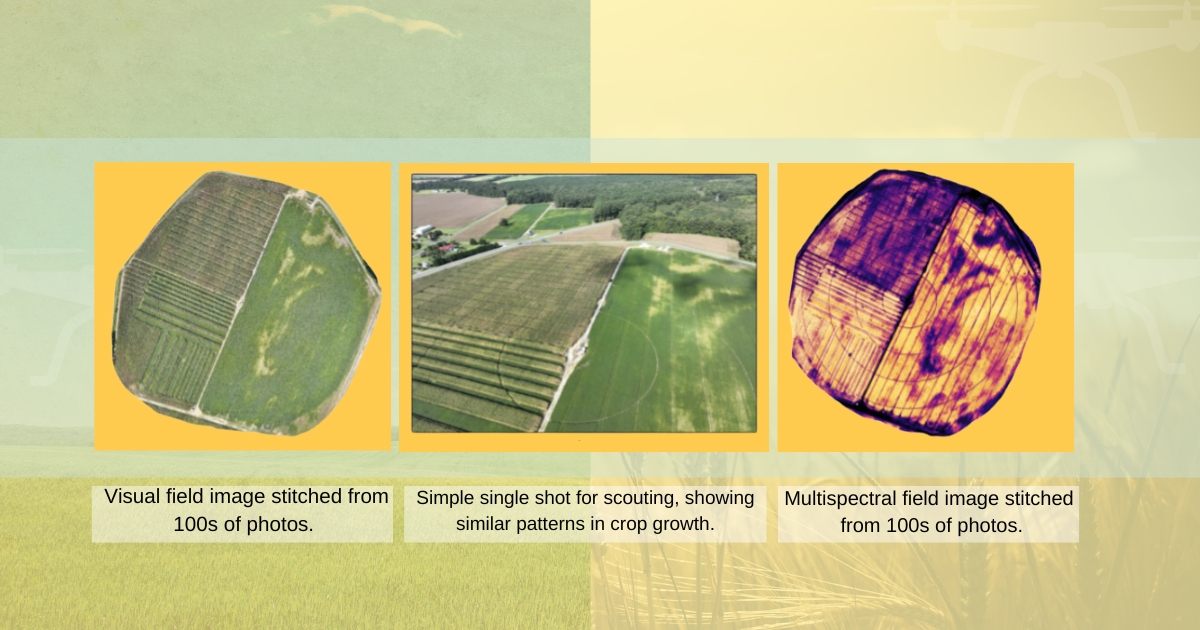
Category: Cooperative Extension
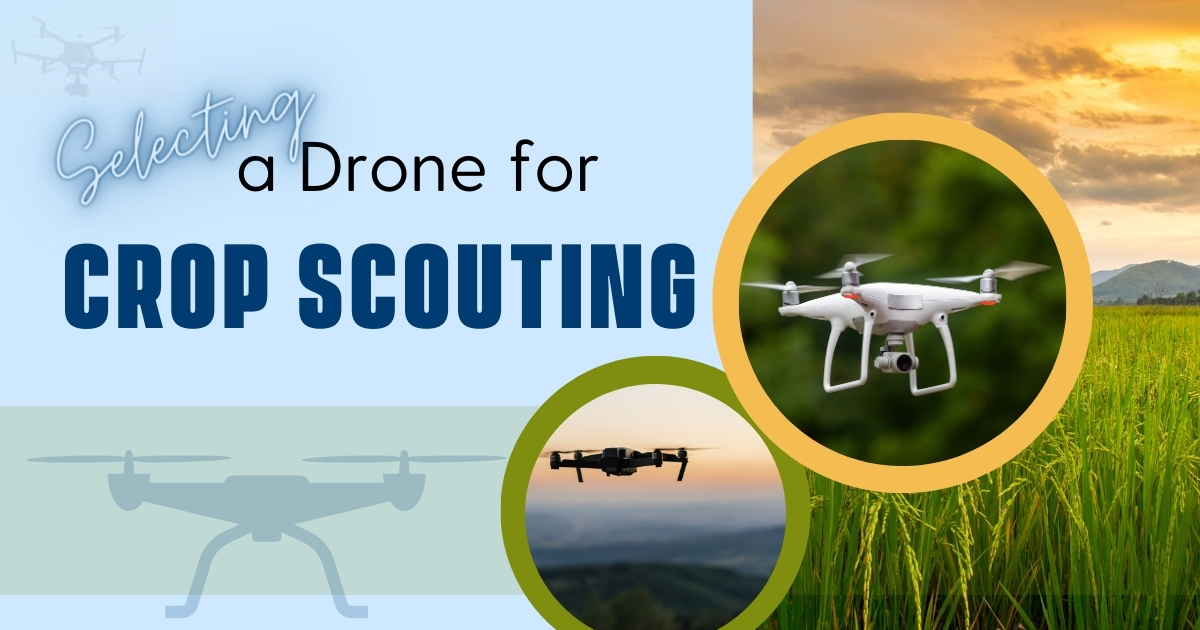
Selecting a Drone for Crop Scouting
April 08, 2024 Written by Jarrod Miller, Agronomy Specialist
Drone Types
After ten years the drone market has become fairly reliable, but it may still be confusing when deciding what kind of drone you may want. There are several types of drones available, with the most common being a quadcopter, which could be considered a micro-helicopter with four propellers (Figure 1a). Other options include a fixed-wing (airplane, Figure 1b), hybrid, or coaxial. A hybrid will take off like a quadcopter by flying like an airplane, helping land in tight spaces but using less battery during flight. Both fixed-wing and hybrids are better for field mapping useful in reconstructing whole fields for precision agriculture applications. For field scouting, the best option is the standard quadcopter, particularly as it can hover overtop of the field, stop at the edges, and land on the back of a truck.
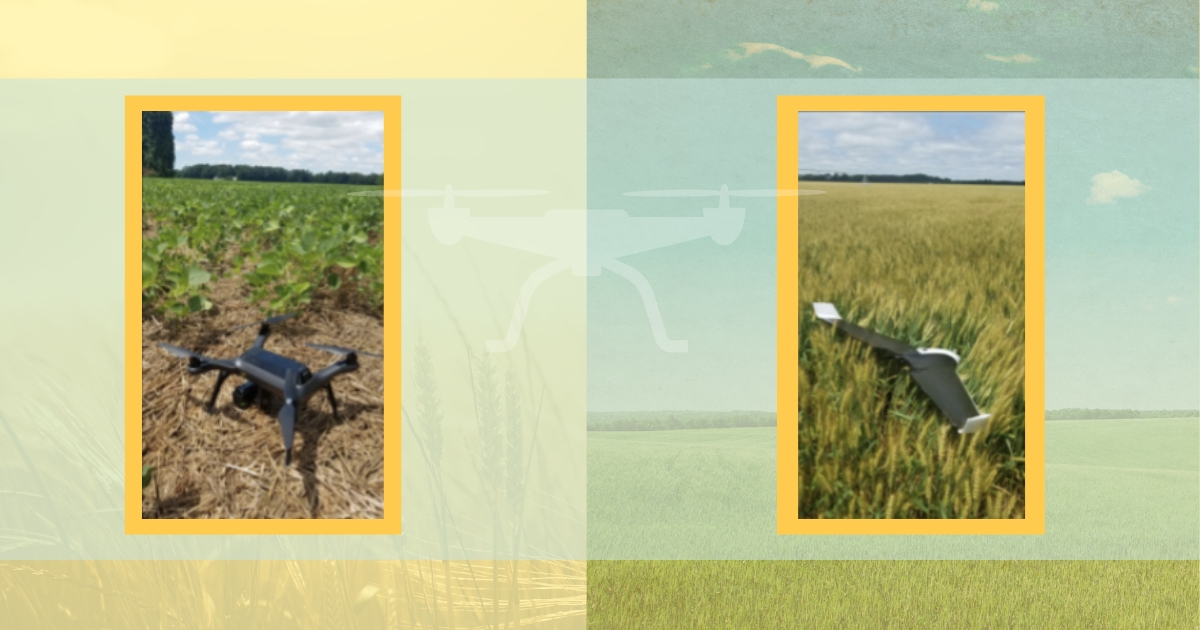
Figure 1: a) On the left is a quadcopter (four propellers) in a soybean field.
Figure 1: b) On the right is a fixed wing lying on small grains.
Drone Size
Quadcopters come in all sizes, with the larger versions better for both field mapping and frequent use for industry (checking power lines). Smaller quadcopters (those that fit in your hand) may not handle higher winds, have lower battery life, and be difficult to see as they move across the field. However, they do make good starter drones. The best-size drone for crop scouting will easily fit in a carrying case in the front seat of your car or truck.
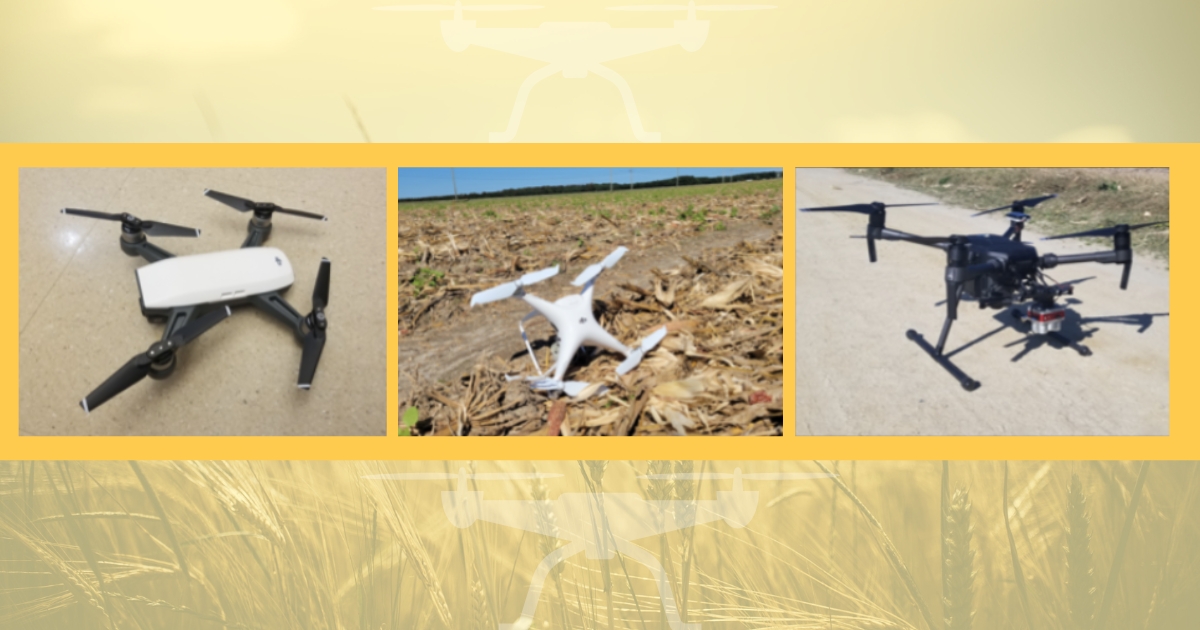
Figure 2: From left to right, a mini-drone, mid-sized (standard consumer), and a larger mapping style drone.
Drone Cameras
Most of the mid-size drones should now come with a standard visual camera attached to a gimbal (Figure 3). The gimbal allows you to turn the direction of the camera, particularly up or down as you scout fields. While a thermal camera may be tempting, it may be more useful for animal production or checking building heat loss. Some of these drones will have both thermal and visual options in one camera, but the cost is often higher than is justified for crop scouting. One camera you absolutely do not need is the multispectral, which is best used for precision agriculture or field research. However, those who are running a drone business may find the mapping capabilities of a multispectral camera helpful if they understand what it means and how to interpret it.
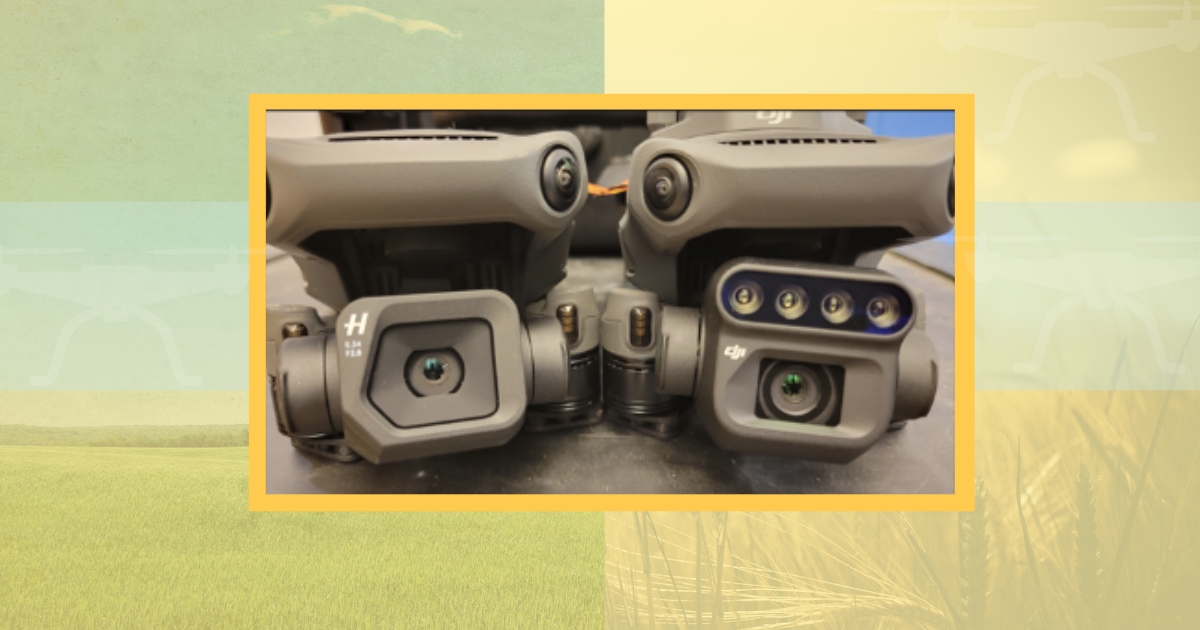
Figure 3: The camera on the left takes regular color photos, while the camera on the right has four additional lenses across the top (multispectral). Both are attached to gimbals.
Drone Hardware and Options
All drones should come with a remote control (Figure 4), although the cheapest options may only connect to your phone or tablet. Some of the newest, mid-priced drones have built-in touch screens that do not require a mobile device to work. Useful options on the controller will include “return to home” and software controls for maximum height or distance from takeoff.
Buying a mid-price drone may also provide you with additional safety using infrared sensors, which help detect distance to objects to avoid an accident. They may also alert you to the presence of nearby planes or helicopters, which is useful when trying to avoid crop dusters.
Finally, everyone should consider buying additional batteries, propellers, and whatever image storage drives the drone uses (e.g., microSD card). Landing pads can also be found online and can prevent dust from building up in the drone in fallow fields.
Aren’t There Regulations?
Yes, since you are running a business, you are required to get a drone pilot license and an RFID signal to alert nearby planes where your drone may be. Most of the rules are meant to ensure the safety of manned airplanes, keeping you aware and out of their way. An app called B4UFly is also useful when checking for airspace restrictions when VIPs visit their beach homes.
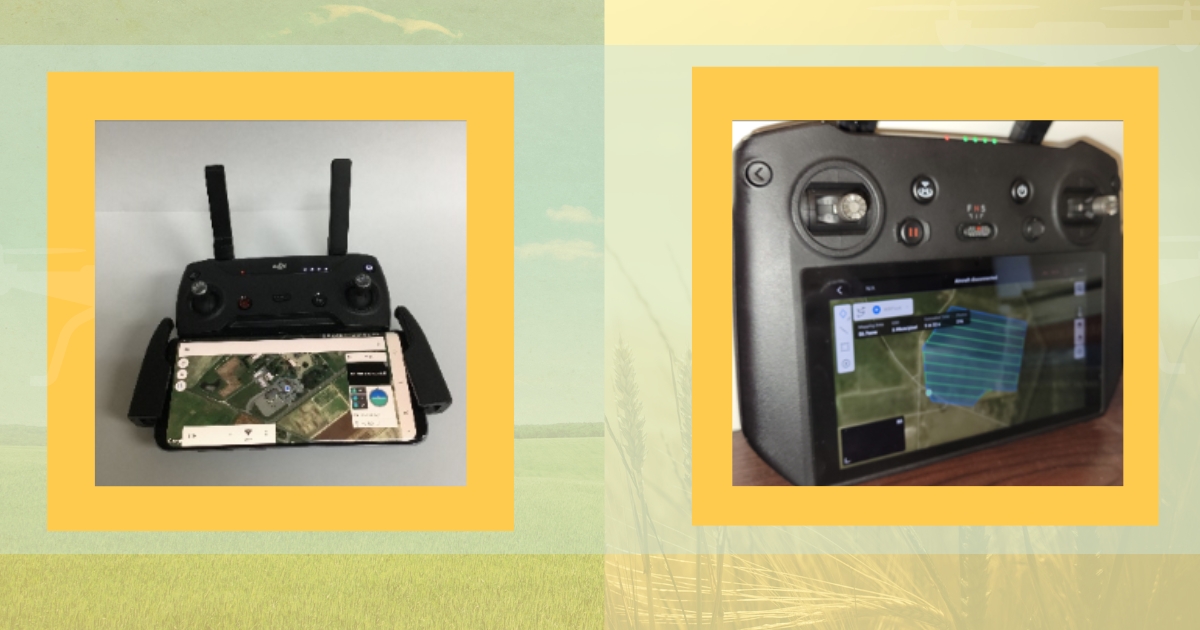
Figure 4: On the left is a remote controller attached to a mobile phone with an app to control taking pictures. On the right is a remote controller with a touchscreen embedded and providing the same functions.
What is a Good Price Point?
Anything less than $300 will probably make you dislike drones, while anything over $2000 may be too expensive. Prices are always changing, and they often come in bundles (extra batteries, ect), pushing the cost up. I have spent anywhere from $700 to $2000 for quality, easy-to-use drones. However, once you are able to observe field variability from above, you may understand the usefulness of a drone.
